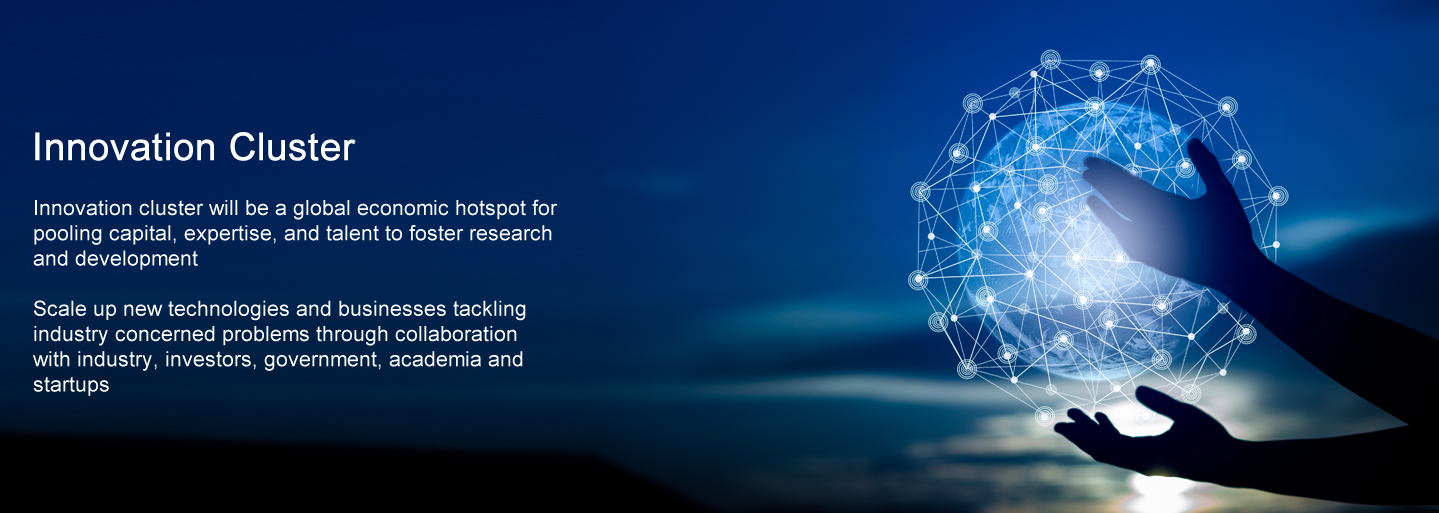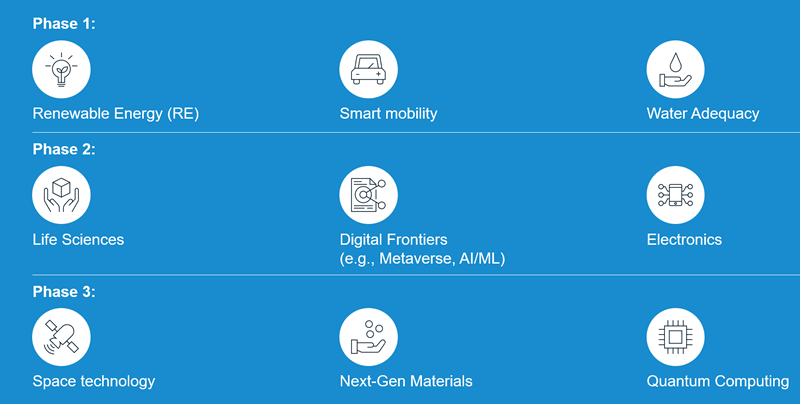



Multiple stakeholder ecosystem comprising of industry, startups, academia, investors and central/state govt. driven by a few anchor industry/academia

Industry led innovation cluster supported by startups and academia to work on the most concerning problems faced by the industry with a clear agreement on IP sharing, share of investment, provision of infrastructure, skilling of talent etc.

Clusters physically located close to talent hubs with easy access to industry/ investors (e.g., metros); can also have multiple locations with shared infrastructure (office space, robust R&D infrastructure for prototyping, design, testing, certification, etc.)

Governance through Innovation Cluster Management Body, independent body comprising of representatives from key stakeholders, guided by an Advisory Board with reputed members

Adapt (to Indian conditions) and scale up manufacturing of high efficiency & cost-effective innovative technologies pertaining to advanced solar PV, wafers etc., to reduce import reliance.
Polysilicon production through new techniques (e.g., FBR) and solar materials such as solar paints, solar skins, solar fabrics etc. provide opportunities to quicken up the net zero ambition.
Innovative blade manufacturing techniques and materials (e.g., flower turbines that occupy less space, additive 3D printing, fibre composite laminate layering, thermoplastic skins, etc.) also contribute significantly to India’s 2070 vision
Build smart asset management solutions such as, smart metering, digital twin, grid solutions such as AI/ML for grid analytics & management, robotics based automatic operations & maintenance, blockchain based tracking, grid integration etc. to make energy transmission efficient and reduce costs.
Techniques producing syngas (e.g., Gasification, plasma gasification, Dendro liquid energy), biofuels (e.g., agri-residue based diesels, biomass pellets, brickets) etc., have potential to curb emissions in energy intensive sectors.
Adopt and scale up manufacturing of high efficiency & cost-effective electrolyzers including technologies such as AWE, PEM, SOEC etc., fuel cells, storage and transportation solutions to enable low-cost production and transportation of green hydrogen helping to become global exporters.
Innovation in financially viable CCUS (carbon capture, usage and storage) technologies to facilitate decarbonization in emissions heavy sectors such as Power, Cement etc.